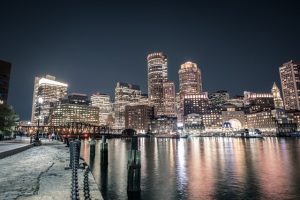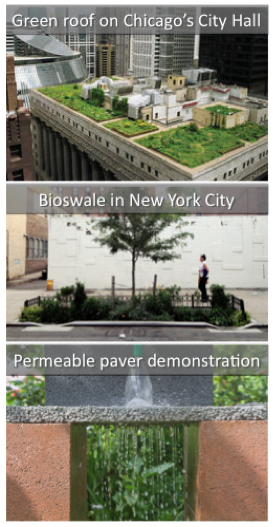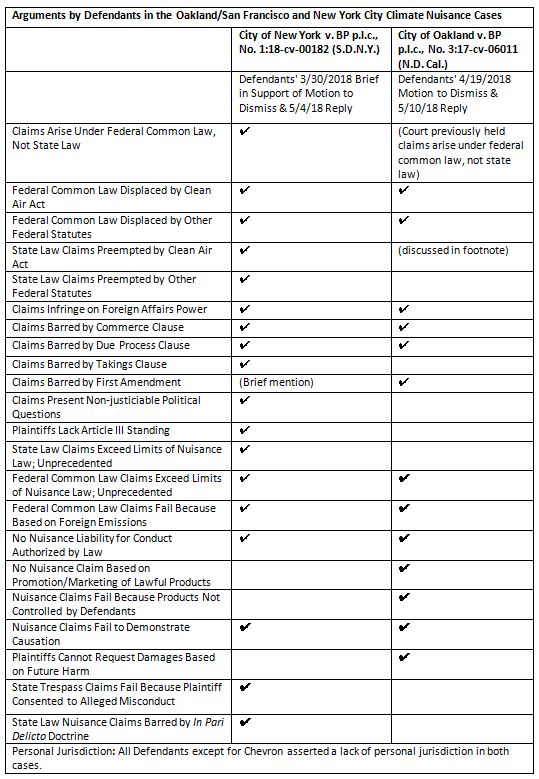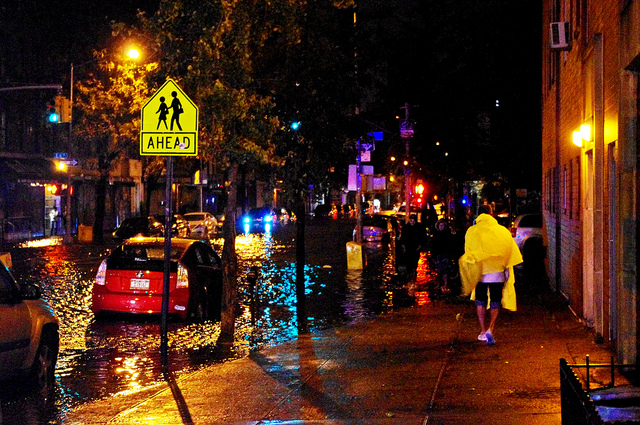By Amy Turner
This week, the Massachusetts State Legislature passed S.2995, An Act Creating a Next-Generation Roadmap for Massachusetts Climate Policy (the “Act”), which sets sweeping climate policy for the state, including greenhouse gas reduction targets of 50 percent by 2030, 75 percent by 2040 (both relative to 1990 levels), and net-zero by 2050, along with a process for setting more sector-specific targets. The bill would place Massachusetts’ GHG reduction goals among the most ambitious in the U.S., and as of this moment it awaits Gov. Charlie Baker’s signature.
passed S.2995, An Act Creating a Next-Generation Roadmap for Massachusetts Climate Policy (the “Act”), which sets sweeping climate policy for the state, including greenhouse gas reduction targets of 50 percent by 2030, 75 percent by 2040 (both relative to 1990 levels), and net-zero by 2050, along with a process for setting more sector-specific targets. The bill would place Massachusetts’ GHG reduction goals among the most ambitious in the U.S., and as of this moment it awaits Gov. Charlie Baker’s signature.
In addition to charting a course for statewide climate action, the Act would help facilitate municipal GHG reductions, particularly reductions in emissions from buildings. Section 31 of the Act directs the state’s Department of Energy Resources to create a “municipal opt-in specialized stretch energy code” that includes a definition of “net-zero building.” The stretch energy code is to be appended to the state building code, and will grant Massachusetts cities and towns new authority to adopt stringent net-zero codes for new and renovated buildings.
Local governments in every state are limited to the authority granted to them by the state in which they are located. In Massachusetts, local authority is limited by, among other things, the statewide nature of Massachusetts’ building code, which preempts construction requirements set at the local level. Under current law, local governments must follow the statewide building code or adopt a somewhat more energy efficient “stretch code,” which is also developed at the state level and which cannot be amended or tailored to local needs or goals. Section 31 would enhance local authority by providing the means to get to net-zero building requirements.
Stretch codes are not new – there are a handful in effect – but they tend to offer only marginal improvements in energy performance over the base code. Massachusetts’ current stretch code, for example, sets energy performance targets for new buildings that are more stringent than the base code, focusing less on prescriptive requirements than does the base code. Municipalities in Vermont also have the option to adopt a stretch code, which includes efficiency improvements and solar-ready and EV charging requirements. New York likewise has an optional stretch code (though local governments there also have authority to adopt more stringent building energy standards than are in the statewide code); this stretch code targets an approximately 11 percent energy savings over the base code and is “about one cycle ahead of” the state’s base code.
Stretch codes that contemplate marginal improvements over the base code aim to move the market by demonstrating the feasibility of incremental building improvements. The stretch code to be developed under Section 31 departs from this framework, allowing Massachusetts cities and towns the ability to take a leap rather than small steps.
Section 31 is the result of local advocacy to expand the ability of Massachusetts municipalities to restrict new fossil fuel development and use. In November 2019, the town of Brookline passed Warrant Article 21, which adopted a prohibition on natural gas connections to new and renovated buildings – the first so-called “natural gas ban” outside of California. By quirk of Massachusetts law, the laws of localities organized under the town form of government (as opposed to the city form, which allows for more local authority) are subject to review and approval by the Massachusetts attorney general. In July 2020, the attorney general’s office declined to approve Warrant Article 21, citing preemption by the state’s building code, fuel gas code and law relating to the manufacture and sale of gas. Brookline’s restrictions on natural gas hookups therefore did not go into effect. (For more information on the legal history of Brookline’s proposed Warrant Article 21 and other restrictions on new natural gas connections, see the blog posts Municipal Natural Gas Bans: Round 1 and Municipal Natural Gas Bans: Round 2 (The Evolution of State Preemption Law).)
From this setback, however, came additional advocacy out of Brookline and other communities, including the deployment of legal tools at the state level. First, one of Brookline’s state representatives, Rep. Tommy Vitolo, along with Rep. Kay Khan of Newton, proposed, though later withdrew, an amendment to an earlier version of the Act that would have created a “clean heating code” – essentially a different form of stretch code that would allow municipalities to adopt a state-developed all-electric (or electric-incentivized) building code. (An all-electric code is the functional equivalent of a natural gas ban; if a building’s appliances and finishes are powered by electricity, no natural gas connection is needed.) Though the amendment was withdrawn, it helped set the stage for Section 31. Second, Brookline’s local legislative body, led by organizers of the effort to pass Warrant Article 21, voted to send a home rule petition to the state legislature, as did the nearby town of Arlington. A home rule petition essentially asks the state legislature to pass a state law that applies only to the petitioning locality. In this case, Brookline asked the legislature to enact the restrictions of Warrant Article 21, while Arlington asked for similar restrictions. These towns’ efforts were supported by advocacy in cities such as Cambridge and Boston. In this way, local governments in Massachusetts signaled to the state their desire for more control over future greenhouse gas emissions resulting from new buildings in their communities.
Section 31 begins to reckon with the conflict between ambitious state climate goals – and the broader imperative to slash greenhouse gas emissions – and the limits of local authority to prevent continued investment in fossil fuel infrastructure. In many states, as in Massachusetts, local governments lack authority to adopt a local building code or to set local building construction requirements. Some municipalities outside of Massachusetts that do have building code authority are still navigating the interplay between state public utilities laws and building energy use. Section 31 represents one way to provide local governments the tools they need to achieve their own, sector-based climate action planning goals and to help states meet their targets as well.
Amy Turner is the Director of the Cities Climate Law Initiative at the Sabin Center for Climate Change Law at Columbia Law School.





